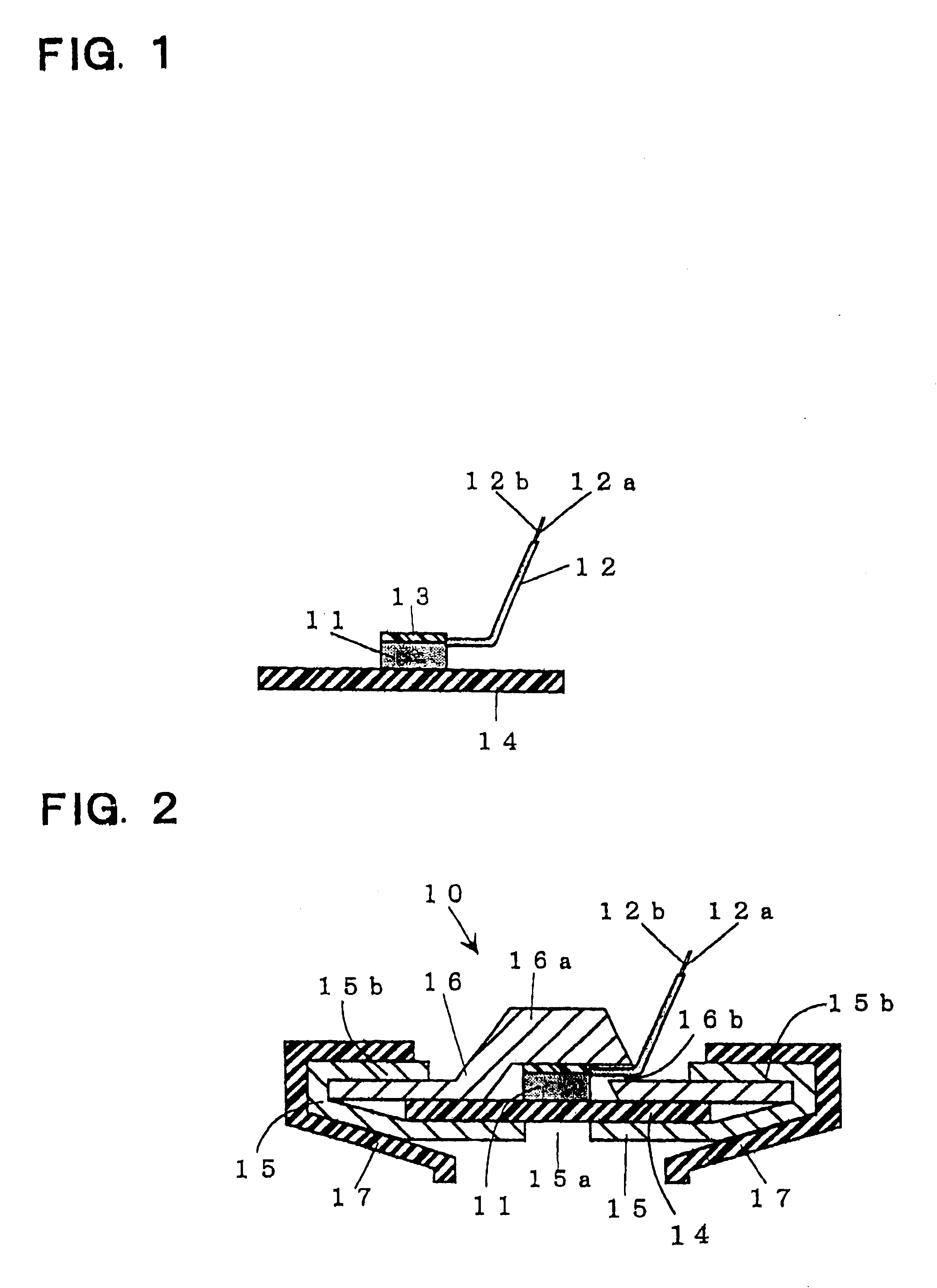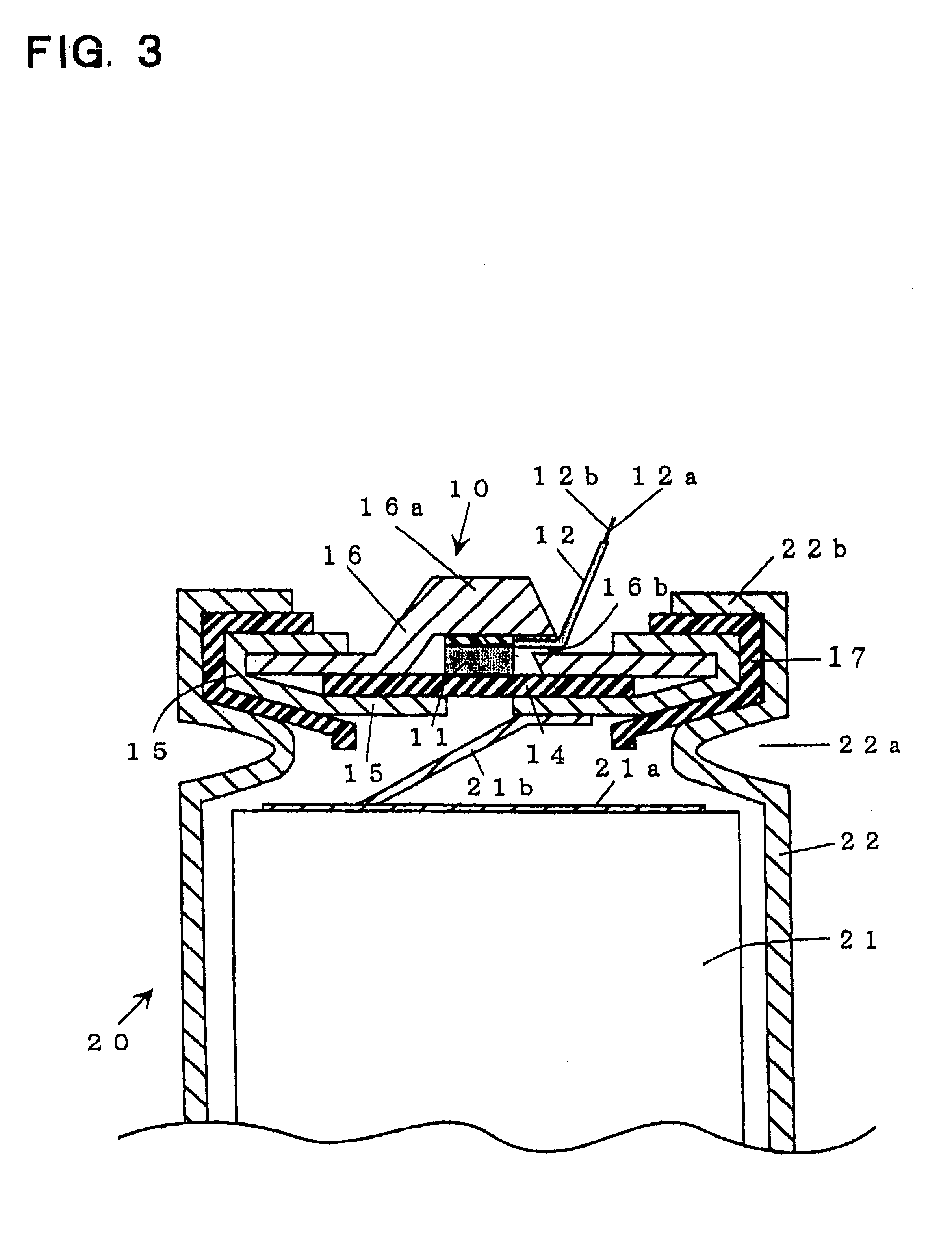Seal type storage battery
a storage battery and seal technology, applied in the field of seal type storage batteries, can solve the problems of inability to use repeatedly, overcharge, and the dispersion of the detected delta-v value at overcharge, and achieve the effect of convenient connection
- Summary
- Abstract
- Description
- Claims
- Application Information
AI Technical Summary
Benefits of technology
Problems solved by technology
Method used
Image
Examples
example 2
Next, in the batteries A-D, the control circuit, which stops charging in response to the pressure detecting signal detected by the pressure-sensitive conducting rubber, was turned off, and these batteries A-D were charged with the charge current 10 A. It was confirmed that the gas was exhausted by the pressure-regulating valve by opening the valve, when the inner pressure became 1.5 MPa or over 1.5 MPa.
Here, in the embodiments described above, although the present invention is explained to apply to the nickel-cadmium storage batteries, this invention can also apply to a nickel metal hydride seal type storage battery or the like.
PUM
| Property | Measurement | Unit |
|---|---|---|
| pressures | aaaaa | aaaaa |
| pressures | aaaaa | aaaaa |
| pressures | aaaaa | aaaaa |
Abstract
Description
Claims
Application Information
 Login to View More
Login to View More - R&D
- Intellectual Property
- Life Sciences
- Materials
- Tech Scout
- Unparalleled Data Quality
- Higher Quality Content
- 60% Fewer Hallucinations
Browse by: Latest US Patents, China's latest patents, Technical Efficacy Thesaurus, Application Domain, Technology Topic, Popular Technical Reports.
© 2025 PatSnap. All rights reserved.Legal|Privacy policy|Modern Slavery Act Transparency Statement|Sitemap|About US| Contact US: help@patsnap.com



